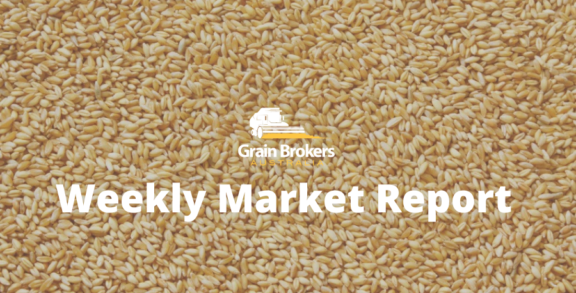
It’s hot! Damn hot! Real hot!
Extreme heat wave conditions have been experienced across many parts of south eastern Australia over the past week with temperature records tumbling in many regions. South Australia appears to have been the worst affected with seventeen official temperature records broken across the state last Thursday.
Adelaide posted a new record of 46.6 °C (115.9 °F) compared to 46.1 °C (115.0 °F) set on January 12, 1939, more than 80 years ago. In Port Augusta, the thermometer peaked at a scorching 49.5 °C (121.1 °F) which was terribly close to the highest official temperature ever recorded in Australia. This is 50.7 °C (123.3 °F), and it was logged at Oodnadatta (also in South Australia) on January 2, 1960. Incidentally, the official highest ever recorded temperature on earth is 56.7°C (134°F), which was measured on 10 July 1913 at Greenland Ranch, Death Valley, California, USA.
The sweltering temperatures extended east into most parts of Victoria and inland regions of New South Wales but not as many records were broken in those states. The neighbouring regions of the Mallee in northern Victoria and the Riverina in south western New South Wales were the hardest hit.
In Queensland, the temperatures were above average but certainly not as extreme as those experienced further south. However, it is the extreme dry that is the biggest challenge for sunshine state grain growers at the moment. Unlike the southern parts of the continent where summer drought is normal, Queensland has a summer dominant rainfall pattern.
The combination of hotter than normal temperatures and well below average summer rainfall is starting to have an impact on the state’s sorghum production. This year’s harvest is going to be a drawn-out affair as seeding in southern Queensland began in early September and planters were still active in late December on some parts of the inner Downs.
Harvest of the crops that were sown in early spring has commenced. Initial quality reports are mixed with screenings issues starting to surface, particularly on the Western Downs. It is far too early to make a call on crop quality and the influence on production, but the unseasonable weather pattern is definitely going to have an impact, particularly if it continues.
If that impact manifests itself in a higher than usual percentage of sorghum 2, then the market has a challenge. It has to try and find a home for the downgraded product. Grower selling has reportedly slowed to a trickle due to the quality uncertainty. They are frantically trying to get sorghum 2 options on their sales to cover the downgrade risk.
However, most stock feed consumers have traditionally been very reluctant to buy sorghum 2. Some take it, but many don’t. If they do, it is only in relatively small quantities and at a significant discount. The focus for many these days has turned to a consistent ration aimed at maximising daily weight gain as opposed to chasing the cheapest grains available.
The Darling Downs market closed last week pretty close to where it started. Stock feed quality wheat was trading at around $450 delivered. Feed barley was around $50 cheaper at $400 delivered, and sorghum was a further $40 discount at $360 delivered. Discounts being applied to sorghum 2 reportedly range from $20 to as high as $35.
All market participants will be keeping a keen eye on the quality trend as harvest ramps up. If test weights are lower than usual and downgrading becomes an issue, then the current discount structure will have to change.
At the current price spread to white grains, domestic sorghum demand could be as high as 1.6 million metric tonnes (MMT). However, with much of Central Queensland still to plant (window closing quickly) and northern New South Wales production well below average, total production is probably going to be less than 2MMT. It could easily be as low as 1.8MMT already.
If there are further production issues the sorghum balance sheet begins to tighten. And that is without and any demand from China. The market will have to react. Firstly, if downgrading increases to such an extent that supply of sorghum 2 outstrips demand, then the sorghum 2 discount will widen as a reflection of the oversupply.
Secondly, if production decreases, and/or China enter the market, to such an extent that supply has to be rationed then the sorghum 1 discount to wheat and barley will be pressured to narrow. This, in turn, will encourage consumers to decrease their sorghum demand by increasing white grain inclusion in their ration at the expense of sorghum.
I guess the next question is will that have an impact on white grain prices delivered to the Queensland consumer? The quick answer is unlikely, unless there is movement in international values or a politically motivated change in demand for Australian wheat or barley.
The prices quoted above are a reflection of full execution from Western Australia. There is an exportable surplus of both wheat and barley in that state, and both grains are seeing export interest at current values. However, a decrease in domestic sorghum production on the east coast will mean that exports of white grains from Western Australia to the east coast will have to increase to fill the void. This will be at the expense of wheat and barley available for international sales.
Trade eyes will be firmly fixed on sorghum production and quality as the harvest ramps up over the next month. If the hotter and drier than normal conditions continue then the northern feed grains market is in for some increased volatility.
The latest Bureau of Meteorology three month (February to April) outlook doesn’t provide much solace. The chances of a warmer three months are higher than 80% over large parts of western and eastern Australia.
It reminds me of the 1987 American war comedy Good Morning Vietnam. When US Armed Forces radio DJ Adrian Cronauer (played by Robin Williams) asks a soldier on the front line “What’s the weather like out there?” the response was an emphatic “It’s hot! Damn hot! Real hot!”
Peter McMeekin is a consultant to Grain Brokers Australia. Call 1300 946 544 to discuss your grain marketing needs





